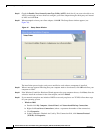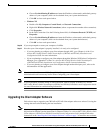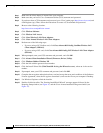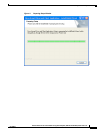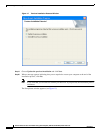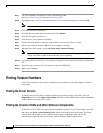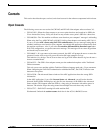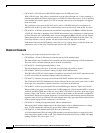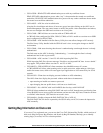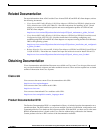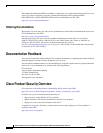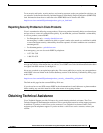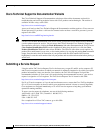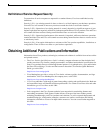
26
Release Notes for Cisco Aironet 802.11a/b/g Client Adapters (CB21AG and PI21AG) Install Wizard 3.0
OL-8338-01
Caveats
• CSCse44432—PI21AG card in HP DC5100 might result in NMI parity error
With a PI21AG card, long software installations over the network might fail. If error reporting is
enabled in the BIOS, this failure might appear as a BIOS-level blue screen error. If error reporting
is not enabled, this failure appears as a loss of network connectivity even though the card appears
to be associated.
This condition occurs when the PI21AG card is used in a HP DC5100 and is associtated to an
AP1200 with an 802.11b radio. This condition does not occur with an AP with an 802.11g radio.
• CSCse49324—CB21AG retransmission mechanism has problems with RRM in LWAPP network
A CB21AG client that is operating in an LWAPP infrastructure loses connection for small periods
of time. When the AP is performing radio resource management (RRM), the AP goes off channel.
During these periods, the AP cannot hear and answer ACK and RTS frames from the client. The
client card initiates a scan for another AP, and network traffic for the client is affected.
Workaround: Increase the HwTxRetries value from 4 to 14 (registry entry) so that the client card
continues to retry for the 20 to 30 milliseconds that the AP is off channel.
Resolved Caveats
The following caveat has been resolved in release 3.0:
• CSCeh59294—Failure to find domain controller during LEAP authentication
The client adapter may be unable to find a domain controller when attempting to LEAP authenticate.
This state can be a normal condition due to network unavailability.
• CSCeh59374—Switching between profiles is slow
The client adapter may take up to 40 seconds to switch from one profile to another.
• CSCei30892—Multi-byte username cannot pass EAP-FAST authentication
The CB21AG and PI21AG client adapters are unable to successfully EAP-FAST authenticate with
an ACS server when the username contains multi-byte characters.
• CSCei40773—Incorrect messages on LEAP and EAP-FAST Authentication Status windows
The LEAP and EAP-FAST Authentication Status windows show a successful status even if an IPX
frame type is not detected or a domain controller is not found on the network.
• CSCsb46833—IOS access point with EAP-secured SSID toggles between "Open" and "Secure"
When an IOS access point is configured with an SSID mapped to a VLAN and the SSID is secured
with EAP and WPA-TKIP, then in the site survey utility's AP scan list, the access point may toggle
between "Open" and "Secure." In this mode, the access point sends out the network configuration
information in the beacon and probe responses. Certain fields may differ between beacons and probe
responses when VLANs are enabled. The client adapter driver may report the fields from the beacon
frame or probe response frame, whichever is received last.
• CSCsb53874—Timing error prevents MAC address authentication
When using MAC address authentication, the client adapter fails to authenticate due to a timing
error. To work around this problem, do not use MAC address authentication.
• CSCsb80735—LEAP-authenticated CB21AG loses connectivity
A LEAP-authenticated CB21AG using WEP mandatory encryption might lose connectivity after
some time and be unable to find an AP. This condition has been observed for an IBM T42 laptop
running Windows XP, service pack 1 or 2.



